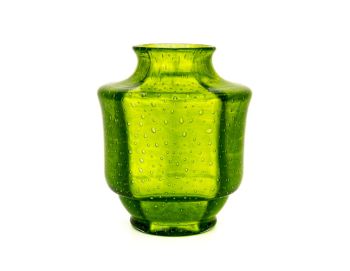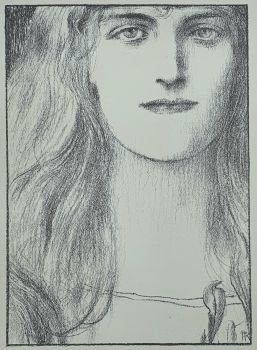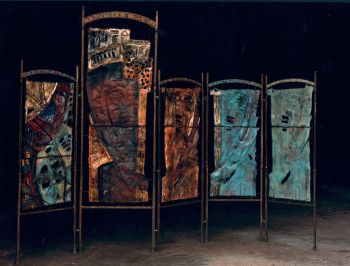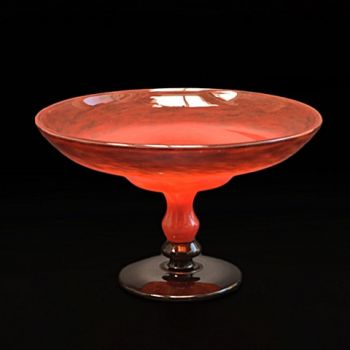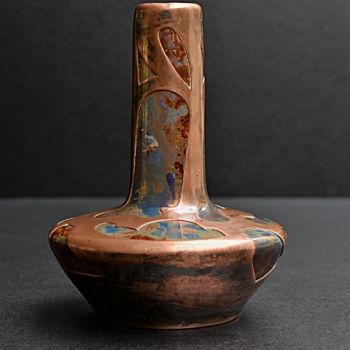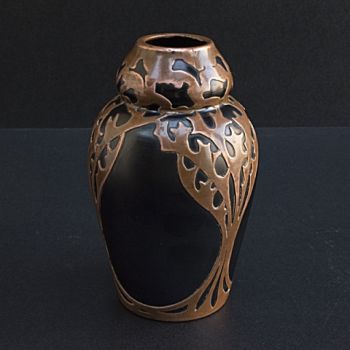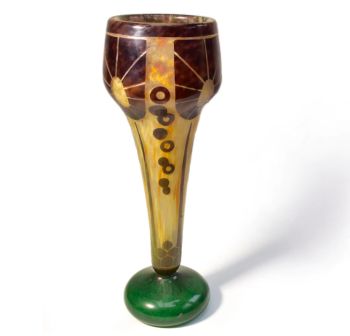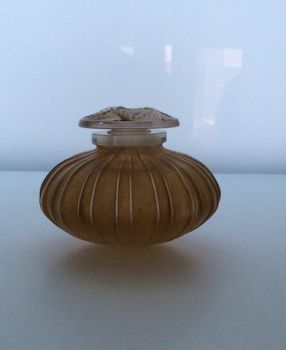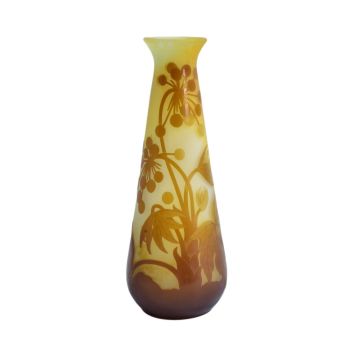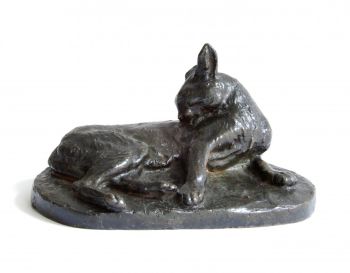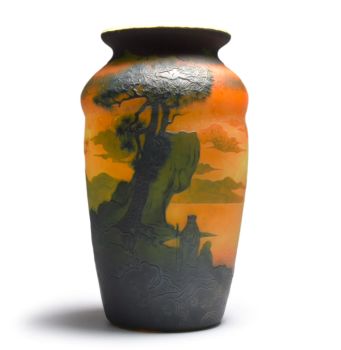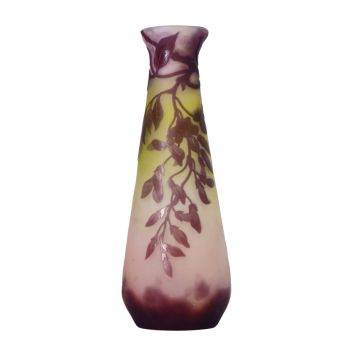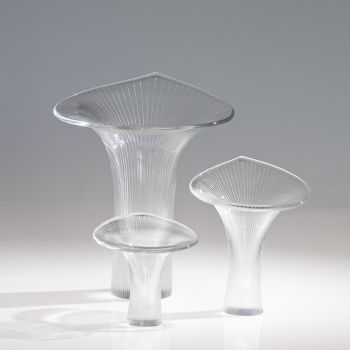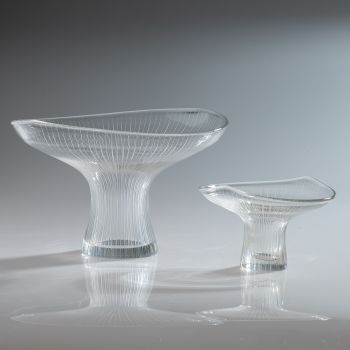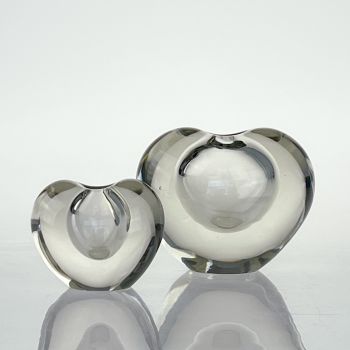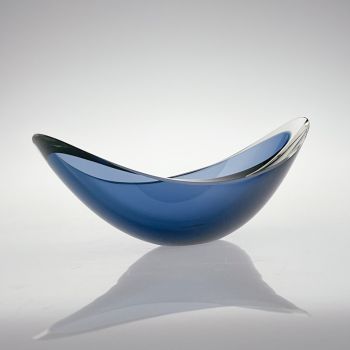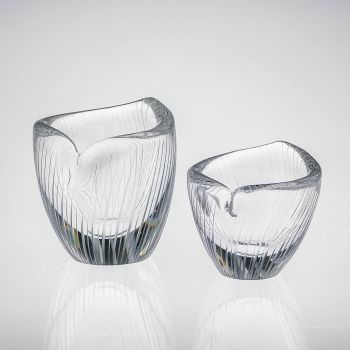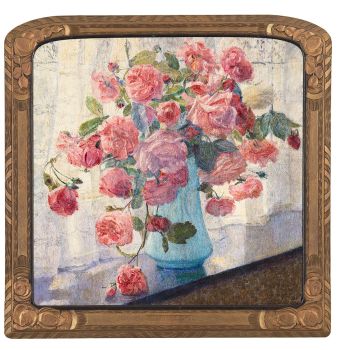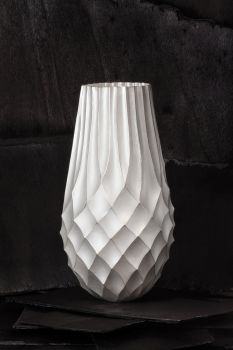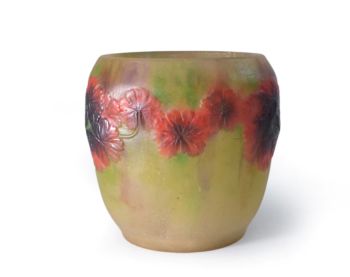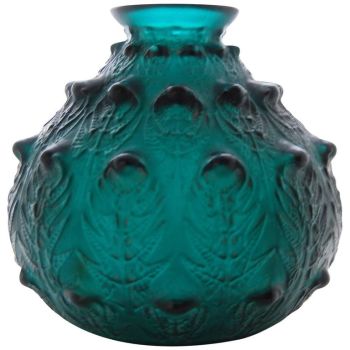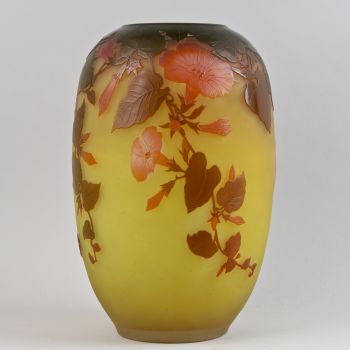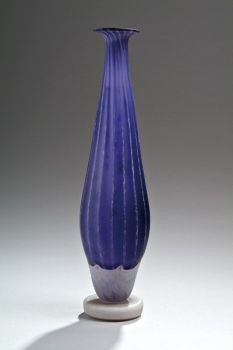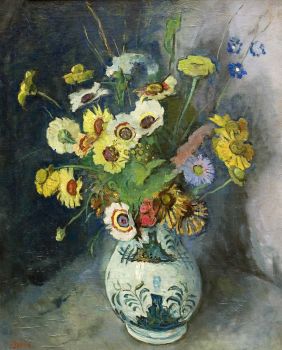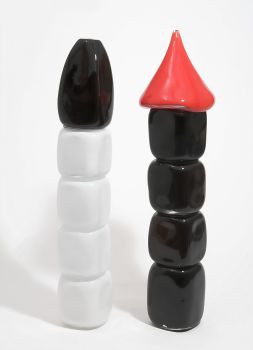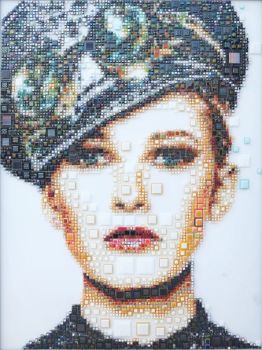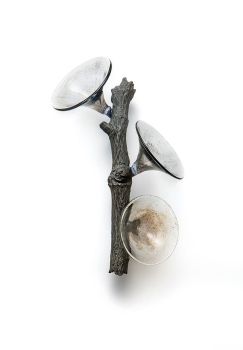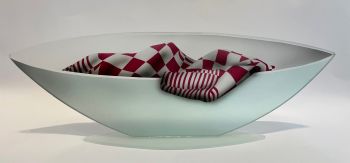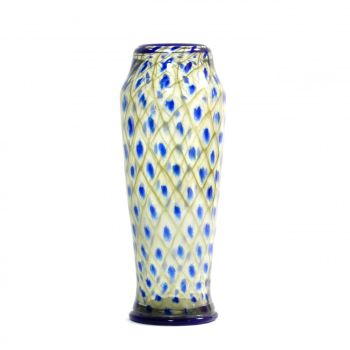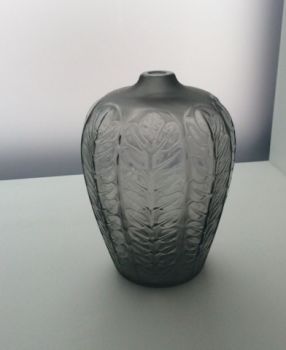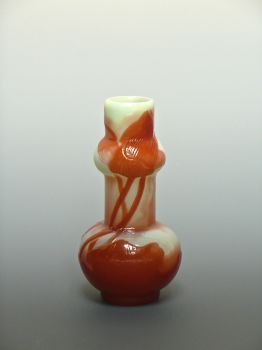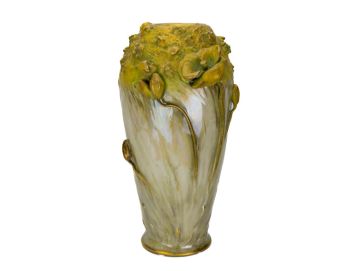Johann Loetz Witwe - Flamarion Titania bowl – Franz Hofstätter 1900 - 1910
Johann Loetz (Lötz) Witwe Klostermühle
Bicchiere
8 cm, ø 10 cm
ConditionNear mint
Prezzo su richiesta
Antiques Emporium
- A proposito di opere d'arteManufacturer: Johann Loetz Witwe
Decor: Flamarion
Style: Jugendstil
Material: Molded and free-formed glass, reduced, improved pontil
Color: Titania – blue with green flames
Period: 1900 – 1909
Description:
Franz Hofstätter’s work for Johann Loetz Witwe after 1900 is not entirely clear to this day. It occurs sporadically that a designer mentions his name on a design making attributions very difficult to trace. The reason of this could be that the produced glass was not immediately considered as very important art glass and therefor it was not needed to describe everything very detailed.
Our beautiful bowl is of the decor Flamarion and is a variation of the highly successful Titania genre that had been in production since 1905. Flamarion made its appearance in the year 1907 and can be attributed to the designer Franz Hofstätter. This attribution is substantiated by his name entry in the invoice book in the period 1908 – 1911 for the delivery of objects for the Exhibition “Österreichischer Kunstgewerbe” in Vienna 1911 / 1912.
The bowl is blown in light blue glass with silver titania glass threads in a crackle pattern with a decoration of drawn vertical green strips with silver titania threads in a flame pattern.
Literature:
Prestel – Böhmisch Glas 1880 – 1940 Band 1 Werkmonographie. Page 243.
Hatje Cantz – Lötz, Böhmisch Glas 1880 bis 1940. Page 88. - A proposito di opere artista
La vetreria Loetz esisteva a Klostermuhle, in Austria, da poco più di cento anni, a partire dal 1840. Ma il suo periodo di massimo splendore fu durante la vita di Max Ritter Von Spaun, nipote dell'originale Johann Loetz che aveva fondato l'azienda.
Von Spaun rilevò l'azienda nel 1879 e la diresse fino al 1908, un anno prima della sua morte. Fu assistito da Eduard Prochaska, suo tecnico specialista, e insieme inventarono, progettarono e produssero tutta una serie di meravigliosi nuovi tipi di vetro, ottenendo numerosi brevetti e vincendo premi in tutte le maggiori esposizioni mondiali durante gli anni 1890 e i primi anni del il nuovo secolo.
L'azienda Loetz era tra i leader nel design Art Nouveau e in particolare nel vetro artistico iridescente. Il vetro "Papillon", come il vaso a sinistra, è talvolta noto oggi come vetro "macchia d'olio". Un'altra colorazione preferita di Loetz era il vetro irridizzato con scie tirate chiamato vetro "Fenomeno".
C'erano vasi irrigiati con nastri di colori metallici che si snodavano sulla superficie, e molti disegni spettacolari con scie applicate di bellissimi colori, o semplicemente tirati fuori dal corpo del vetro per formare maniglie o decorazioni.
Intorno al 1900 l'azienda iniziò a collaborare con designer esterni e alcuni grandi artisti disegnarono pezzi per Lotz, in particolare Joseph Hofmann, Koloman Moser, Maria Kirchner e Hofstatter.
Nel 1908 Loetz fu rilevata dal figlio di Max Von Spaun, anche lui chiamato Max, e sebbene stentasse finanziariamente (fallendo nel 1911 e di nuovo nel 1931) ci furono diversi grandi designer il cui lavoro fu prodotto da Loetz in quegli anni e attraverso l'arte periodo déco. Questi includevano Adolf Beckert e Michael Powolny.
Sei interessato ad acquistare questa opera d'arte?
Artwork details
Related artworks
Johann Loetz (Lötz) Witwe Klostermühle
Johann Loetz Witwe – Phänomen Genre vaas in blauw opaal – 19021902 - 1903
Prezzo su richiestaAntiques Emporium
Johann Loetz (Lötz) Witwe Klostermühle
Johann Loetz Witwe - Phänomen Genre 7773 – Orange1900 - 1910
Prezzo su richiestaAntiques Emporium
Johann Loetz (Lötz) Witwe Klostermühle
Johann Loetz Witwe – Jugendstil Cobalt Papillon vaas1900 - 1910
Prezzo su richiestaAntiques Emporium
1 - 4 / 7Johann Loetz (Lötz) Witwe Klostermühle
Johann Loetz Witwe – Jugendstil Cobalt Papillon vaas1900 - 1910
Prezzo su richiestaAntiques Emporium
1 - 4 / 24Amalric Walter
Amalric Walter & Henri Bergé – Crabe plumier1920 - 1929
Prezzo su richiestaAntiques Emporium
1 - 4 / 24René Lalique
Un rarissimo vaso "Fougeres" verde intenso disegnato da R. Lalique1912
€ 8.950Lennart Booij Fine Art and Rare Items
 A cura di
A cura diSilla Scheepens
Herman Bogman jr.
Flower still life of a nasturtium in a blue vase1950 - 1965
Prezzo su richiestaAdelwein Kunst
1 - 4 / 24Gyrinus
Verre gravé pointillé avec putti1764 - 1766
Prezzo su richiestaPeter Korf de Gidts - Antiquairs
Amalric Walter
Amalric Walter & Henri Bergé – Crabe plumier1920 - 1929
Prezzo su richiestaAntiques Emporium
René Lalique
Un rarissimo vaso "Fougeres" verde intenso disegnato da R. Lalique1912
€ 8.950Lennart Booij Fine Art and Rare Items
 A cura di
A cura diSilla Scheepens
1 - 4 / 24Johann Loetz (Lötz) Witwe Klostermühle
Johann Loetz Witwe - Phänomen Genre 7773 – Orange1900 - 1910
Prezzo su richiestaAntiques Emporium
Franz (NamGreb) Bergmann
Franz Bergman – Viennese cold-painted bronze lizard with a mechanical mouth1900 - 1909
Prezzo su richiestaAntiques Emporium
Johann Loetz (Lötz) Witwe Klostermühle
Johann Loetz Witwe – Jugendstil Cobalt Papillon vaas1900 - 1910
Prezzo su richiestaAntiques Emporium
Gabriel Argy-Rousseau
Gabriël Argy-Rousseau – Crabes et Algues vase – 19201920 - 1929
Prezzo su richiestaAntiques Emporium
1 - 4 / 12


















